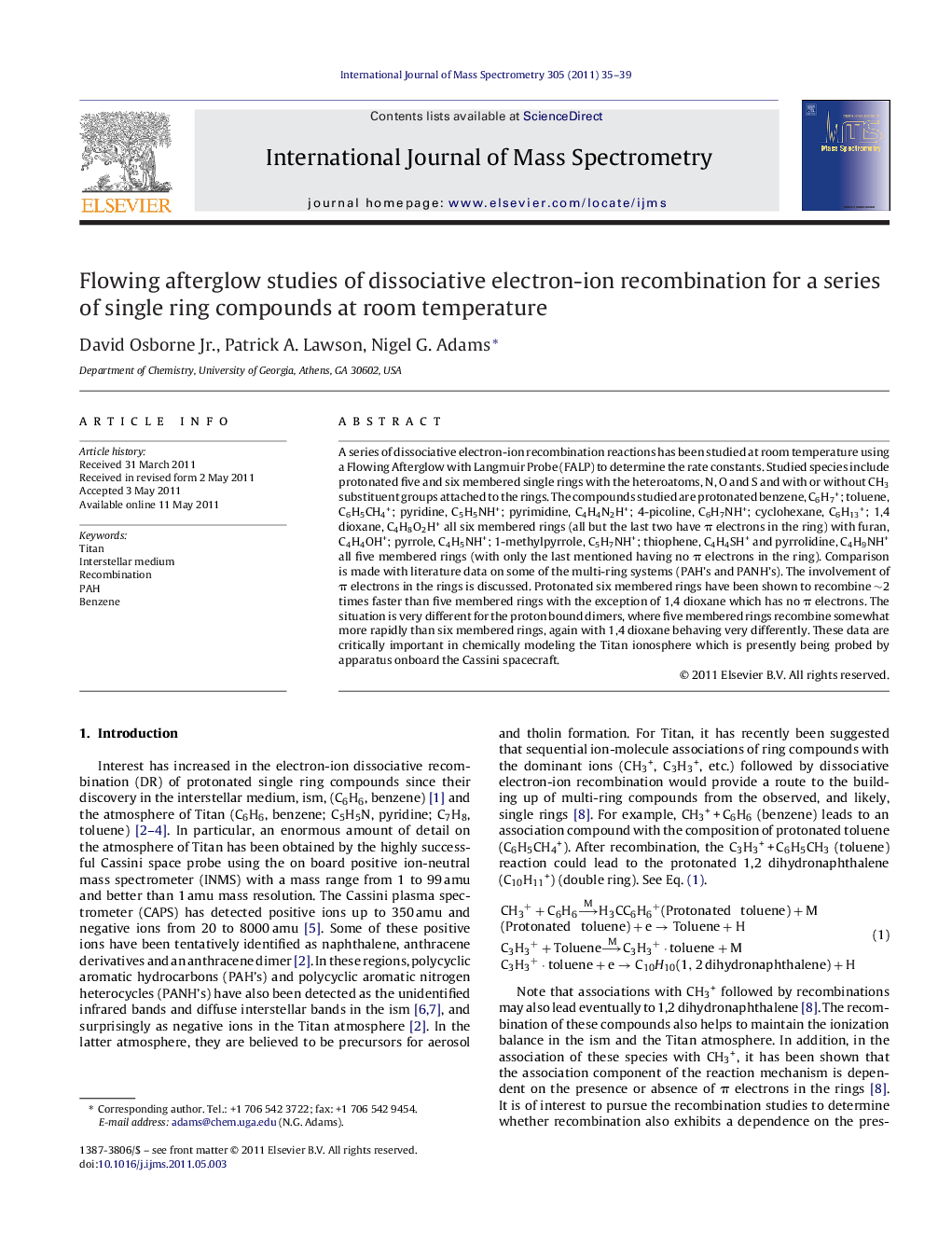| کد مقاله | کد نشریه | سال انتشار | مقاله انگلیسی | نسخه تمام متن |
|---|---|---|---|---|
| 1193331 | 1492308 | 2011 | 5 صفحه PDF | دانلود رایگان |

A series of dissociative electron-ion recombination reactions has been studied at room temperature using a Flowing Afterglow with Langmuir Probe (FALP) to determine the rate constants. Studied species include protonated five and six membered single rings with the heteroatoms, N, O and S and with or without CH3 substituent groups attached to the rings. The compounds studied are protonated benzene, C6H7+; toluene, C6H5CH4+; pyridine, C5H5NH+; pyrimidine, C4H4N2H+; 4-picoline, C6H7NH+; cyclohexane, C6H13+; 1,4 dioxane, C4H8O2H+ all six membered rings (all but the last two have π electrons in the ring) with furan, C4H4OH+; pyrrole, C4H5NH+; 1-methylpyrrole, C5H7NH+; thiophene, C4H4SH+ and pyrrolidine, C4H9NH+ all five membered rings (with only the last mentioned having no π electrons in the ring). Comparison is made with literature data on some of the multi-ring systems (PAH's and PANH's). The involvement of π electrons in the rings is discussed. Protonated six membered rings have been shown to recombine ∼2 times faster than five membered rings with the exception of 1,4 dioxane which has no π electrons. The situation is very different for the proton bound dimers, where five membered rings recombine somewhat more rapidly than six membered rings, again with 1,4 dioxane behaving very differently. These data are critically important in chemically modeling the Titan ionosphere which is presently being probed by apparatus onboard the Cassini spacecraft.
Figure optionsDownload high-quality image (66 K)Download as PowerPoint slideHighlights
► Protonated five and six membered rings with heteroatoms N, O and S studied.
► Protonated six membered rings recombined ∼2 times faster than five membered rings.
► Proton bound five membered ring dimers recombined more rapidly than six membered.
► 1,4 dioxane behaves differently from other five and six membered rings.
Journal: International Journal of Mass Spectrometry - Volume 305, Issue 1, 1 August 2011, Pages 35–39